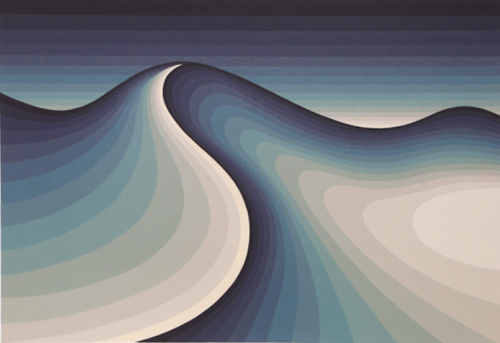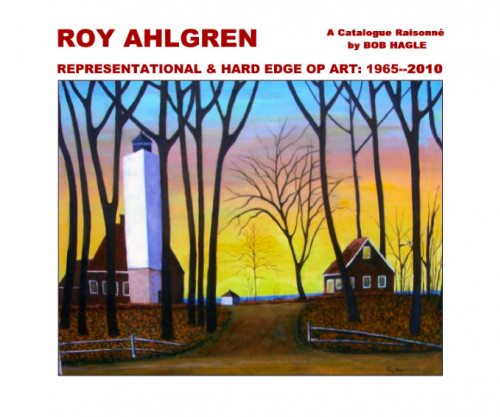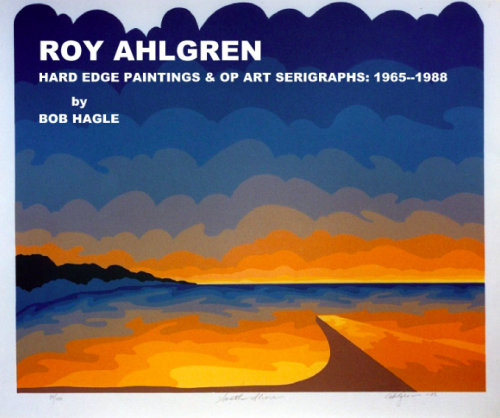About the artist:
American artist and printmaker, famous representative of "Op-Art" movement.
Roy Ahlgren first showed his creative ability in grade-school, where he drew caricatures, unusual designs similar
to optical illusions he had seen in comic books and magazines. He majored in art and was taught by Catherine
Plavcan at Erie Technical High School. Later he studied portraiture under Zoltan Heya at Villa Maria Academy and
eventually earned his B.A. in art education from the University of Pittsburgh.
During the 1960's Ahlgren worked as an artist-designer for the Louis Marx Toy Company in Erie, where he
developed silk-screen ability for packaging designs at the annual toy exhibit in New York.
In 1964 Ahlgren began to work in the Op-Art and hard edge technique. Hard edge serigraphy prints require a skill
in creating the master drawing and a steady hand cutting the stencil for the screen.
Early Ahlgren prints consisted of two or three colors in similar value. Possessed by that unique media he quickly
established himself as a significant American printmaker.
Serigraphy fit Ahlgren's fine art objectives perfectly. While his early designs were accomplished in editions of 25
to 80 prints, his later more sophisticated designs were often expanded to 100 to 150 signed prints per edition. As
such an edition might take several weeks to complete, Ahlgren mixed his colors in advance to ensure adequate
quantities of ink to finish printing the edition.
In 1965 Ahlgren was a partner in the Galerie 8 - an art gallery showing local artists' works.
In 1970s he worked as an Assistant Professor in Printmaking at Edinboro University.
After twenty years of teaching and printmaking, Roy retired in 1990 to paint full time.
Ahlgren designed and printed his serigraphy editions from 1965 to 1988 and only stopped then due to health
reasons.
His design, usually abstract and geometric, often depicted motion through modulated color or volume using
linear and atmospheric perspective. In a similar process, Ahlgren designed seriographic print editions also using a
theme of motion via color modulation.
Ahlgren received more than 60 prizes, among them purchase awards from the Seattle Art Museum, Minot State
College, Texas Tech University Museum and the Mississippi Art Association.
He exhibited in many national print shows.
Artworks by the artist are in over 100 permanent collections including the U.S. Information Agency, Butler Art
Institute, St. Paul Museum, Minnesota, Memorial Art Gallery Rochester, N.Y., Erie Art Museum, Erie.












